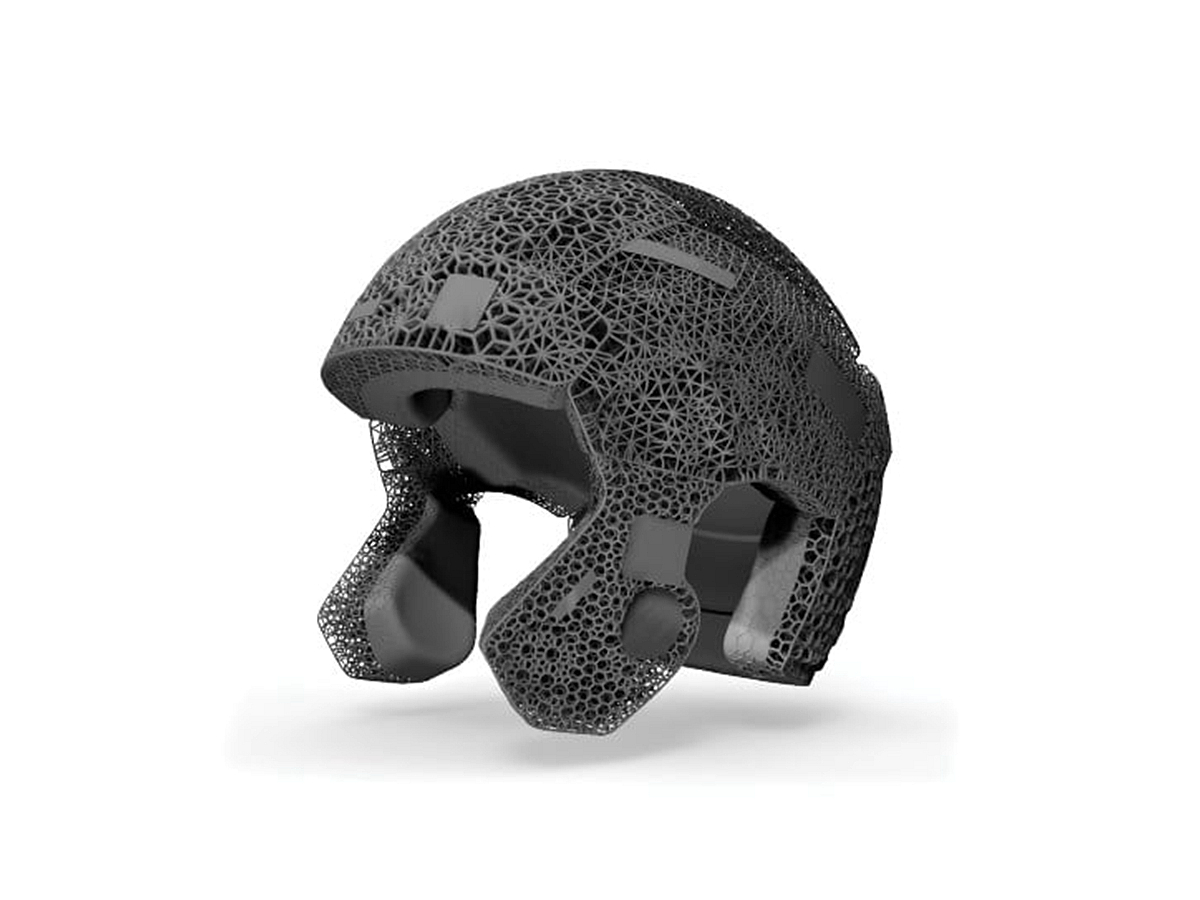Built To Perform With Durable Plastic Protective Gear, Elevating Athletic Performance
Introduction
Plastic 3D printing is transforming the world of sports by enabling the production of lightweight, impact-resistant, custom-fit protective gear that enhances athletic performance and safety. Utilizing advanced plastic 3D printing technologies like Fused Deposition Modeling (FDM), Multi Jet Fusion (MJF), and Stereolithography (SLA), tough plastic materials like Nylon (PA), PETG, and Polycarbonate (PC) deliver unparalleled strength, flexibility, and lightweight performance for sports protection equipment.
Compared to traditional molding and manual fabrication, plastic 3D printing for sports gear enables faster prototyping, full customization to athlete anatomy, weight reduction, and improved protective performance.
Applicable Material Matrix
Material | Impact Strength | Flexibility | Surface Finish | Thermal Resistance (°C) | Protective Gear Suitability |
|---|---|---|---|---|---|
Very High | High | Good | ~120 | Helmets, pads, braces | |
High | Moderate | Very Good | ~70–80 | Shin guards, mouthguards | |
Extremely High | Moderate | Excellent | ~130–140 | Face shields, visors | |
High | Very High | Good | ~80–100 | Flexible protective inserts | |
Moderate | Moderate | Good | ~95 | Lightweight protective shells |
Material Selection Guide
Nylon (PA): Offers superior toughness and flexibility, making it the material of choice for custom-fit protective helmets, knee braces, and athletic body armor.
PETG: Combines durability and slight flexibility, ideal for shin guards, chest protectors, and custom mouthguards where moderate impact protection is needed.
Polycarbonate (PC): With unmatched impact resistance, PC is used for face shields, visors, and helmet lenses requiring maximum protection and optical clarity.
TPU (Thermoplastic Polyurethane): Highly flexible and resilient, TPU is perfect for impact-absorbing inserts, flexible braces, and padding components.
ABS: Easy to print and lightweight, ABS is excellent for creating durable external protective shells for sports helmets and guards.
Process Performance Matrix
Attribute | Plastic 3D Printing Performance |
|---|---|
Dimensional Accuracy | ±0.1 mm |
Surface Roughness (As-Printed) | Ra 5–15 μm |
Layer Thickness | 50–200 μm |
Minimum Wall Thickness | 0.8–1.5 mm |
Feature Size Resolution | 300–600 μm |
Process Selection Guide
Custom Fit and Ergonomics: 3D printing allows for bespoke protective gear tailored to an athlete’s exact body measurements, improving comfort, mobility, and protective coverage.
Lightweight Structural Design: Lattice and topology-optimized structures reduce weight while enhancing energy absorption during impacts.
Durability for High-Impact Sports: Materials like PC and Nylon withstand repeated high-stress impacts without cracking or significant deformation.
Rapid Prototyping and Iteration: Enables fast design validation, ensuring protective gear meets the specific performance and comfort needs of different sports and athlete profiles.
Case In-Depth Analysis: Nylon 3D Printed Custom-Fit Shin Guards for Professional Soccer Players
A professional sports equipment company needed lightweight, high-impact shin guards customized for individual athletes. Using our plastic 3D printing service with Nylon (PA), we produced precision guards, achieving dimensional accuracy within ±0.1 mm and superior impact absorption. The final designs weighed 20% less than traditional molded guards and provided a better anatomical fit, enhancing player mobility and comfort on the field. Post-processing included surface finishing for smoothness and branding applications.
Industry Applications
Sports and Recreation
Helmets, face shields, and visors for contact sports.
Custom-fitted shin guards, knee braces, and elbow pads.
Impact-absorbing padding inserts for cycling, skating, and motocross gear.
Professional and Competitive Sports
Lightweight, aerodynamic protective shells for racing and extreme sports.
Custom orthopedic support braces for injury prevention and recovery.
Recreational Fitness and Safety
Protective wearables for fitness training, martial arts, and adventure sports.
Safety accessories for youth sports leagues and school athletic programs.
Mainstream 3D Printing Technology Types for Protective Gear Components
Fused Deposition Modeling (FDM): Best for durable, functional prototypes and production of custom-fit protective gear.
Multi Jet Fusion (MJF): Ideal for strong, flexible, and detailed parts used in performance sports equipment.
Stereolithography (SLA): Suitable for high-detail, smooth-surface components, especially when visual presentation and surface finish are critical.
FAQs
What plastic materials are best suited for 3D printed sports protective gear?
How does 3D printing improve the fit, comfort, and protection of athletic equipment?
What post-processing techniques enhance the performance and appearance of 3D printed sports gear?
Can 3D printed protective gear withstand impacts and environmental stresses typical in sports?
How does 3D printing speed up the customization and production of high-performance athletic equipment?

